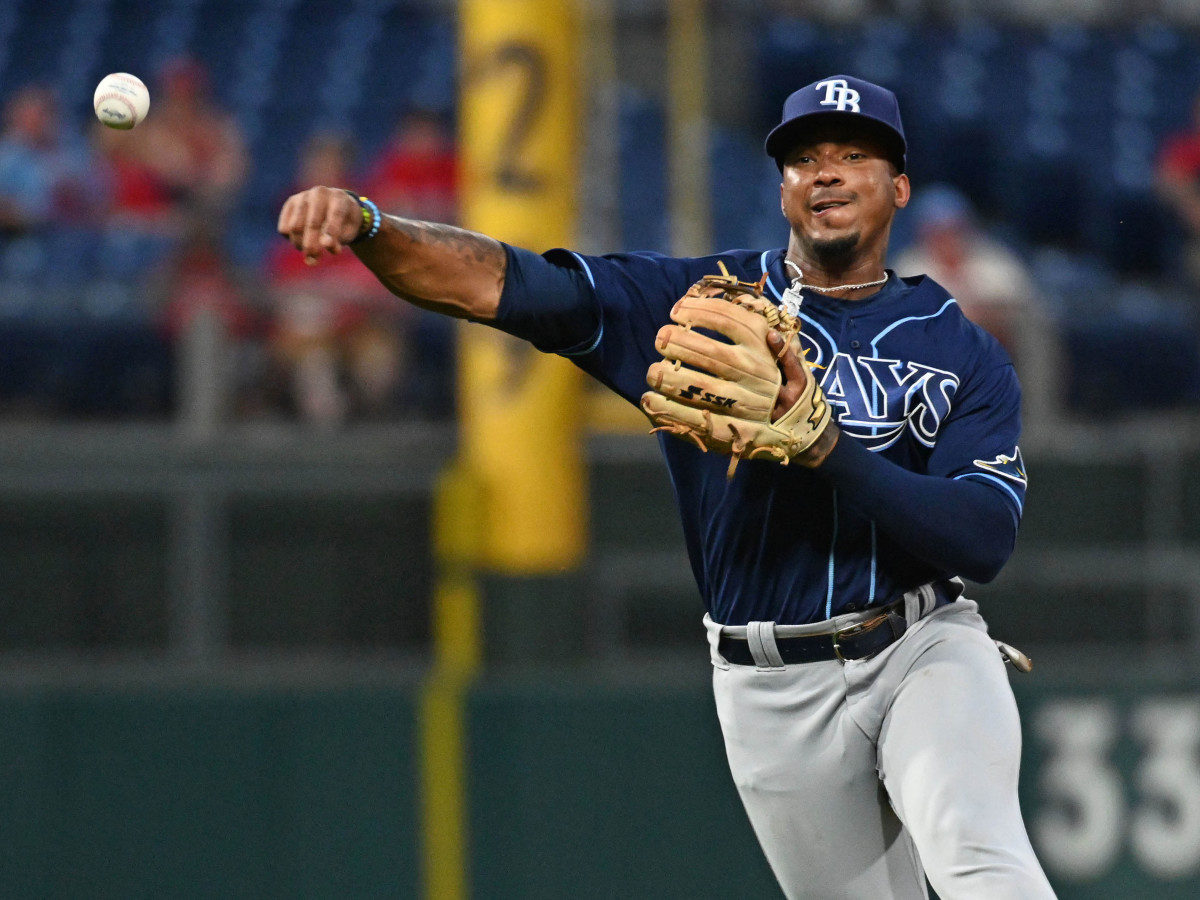Rays Finally Decide to Raise One of Their Own

It took Wander Franco three plate appearances to hit his first career home run and prove himself worthy of the massive hype that preceded his big-league arrival. It took just 351 more before he became one of the league’s highest-paid players.
Franco and the Rays have reportedly agreed to a historic 11-year, $185 million contract extension, per ESPN’s Jeff Passan, with a $25 million option for a 12th year and bonuses that can push the total value of the contract to $223 million. Assuming that final year gets picked up, the deal will keep him with the Rays through 2033. It’s the largest contract ever given to a player with less than a year of service time, according to The Athletic, and signals a significant departure in strategy for a franchise notorious for sending away players before they’re due for big paydays—not for handing out sizable checks themselves.
Franco’s contract is worth nearly as much as Tampa Bay’s payrolls from the past four seasons combined. It’s the biggest contract the team has ever doled out, and puts Franco in elite company before he’s even played his 100th career game.
Deals of this length typically ensure a player will finish his career with one team, or at the very least spend the entirety of their primes (and usually a good portion of their decline years) in one jersey. Franco’s deal expires when he’s 32, meaning he’ll still be in a position to cash in on the open market should he choose to do so.

Thirteen years ago—or one year longer than the time it will take for Franco’s deal to expire—the Rays utilized a similar, if much more tame, tactic to extend then-22-year-old third baseman Evan Longoria just six games into his big-league career. That Longoria’s six-year, $17.5 million deal seemed like a bold play at the time shows both how far the game has progressed from the standpoint of properly valuing young talent, and the gulf between a player of Franco’s prowess and nearly everybody else currently wearing a uniform.
Comparing Franco’s new deal to his peers' is impossible, because he has none who were this early into their careers when they finally struck it this big. But compared to the money earned by other young superstars through the first decade-plus of their careers, his earnings will appear right in line with what he’s worth if he progresses into one of the game’s best players:
If Franco's deal is 11 years/$185 million that's not a crazy low amount.
— JJ Cooper (@jjcoop36) November 23, 2021
Bryce Harper's first 11 years: $141 million (free agent deal was backloaded)
Manny Machado first 11 years: $174 million
Fernando Tatis Jr first 11 years, $157 million
Source: Baseball Reference
There are examples of young players signing pre-arbitration contract extensions that are initially viewed as team-friendly—the Ronald Acuña Jr. (eight years, $100 million) and Ozzie Albies (seven years, $35 million) deals with Atlanta are the two that jump to mind. But it’s quite difficult to square the notion that Franco could be selling himself short by locking in his earnings so far from free agency, and capping his value well into his 30s when he’s not even nine months into his 20s. Even if he pans out to be as great as many believe he could be—and he’s already well on his way to doing so—very few players have made that much money during their careers. That the Rays were the team willing to break the mold with this big of a financial commitment adds a further fascinating layer to the proceedings.
Perhaps the best comparison for Franco’s newfound riches is the 14-year, $340 million deal the Padres gave Fernando Tatis Jr. last winter. Tatis, then about 17 months older than Franco is now, had already put up 39 home runs, 27 stolen bases and a .301/.374/.582 slash line over 143 career games and emerged as one of the most popular players in the game. Franco’s talents and production could feasibly surpass those of Tatis, even if his name recognition while playing for one of the league’s most anonymous (yet consistently successful) franchises may never come close.
The Rays have come by that sustained success by doing exactly the opposite of what they did on Tuesday. They identify and develop young, affordable talent better than any other team, then flip those players for more assets before they become too expensive. It’s the same approach they’ve followed in trading away All-Star caliber players like Blake Snell, Willy Adames, Diego Castillo, Corey Dickerson and Emilio Pagan in recent years, and one they’ve ridden to three consecutive postseason appearances.
Franco has proven the exception to the rule, and the fact that the ever-stingy Rays dug deep into their pockets to ensure the switch-hitting shortstop would remain in the fold for the next dozen years tells you everything you need to know about how special a player we have on our hands. Franco’s payday has been secured, but the real show is just getting started.
More MLB Coverage:
• Marlins Retain Top Starter to Signal a New Era
• Verlander's Singular Ceiling Makes Him a Unicorn Houston Had to Retain
• The Astros Aren't Breaking Up Just Yet
• Rankings and Predictions for MLB's Top 50 Free Agents
